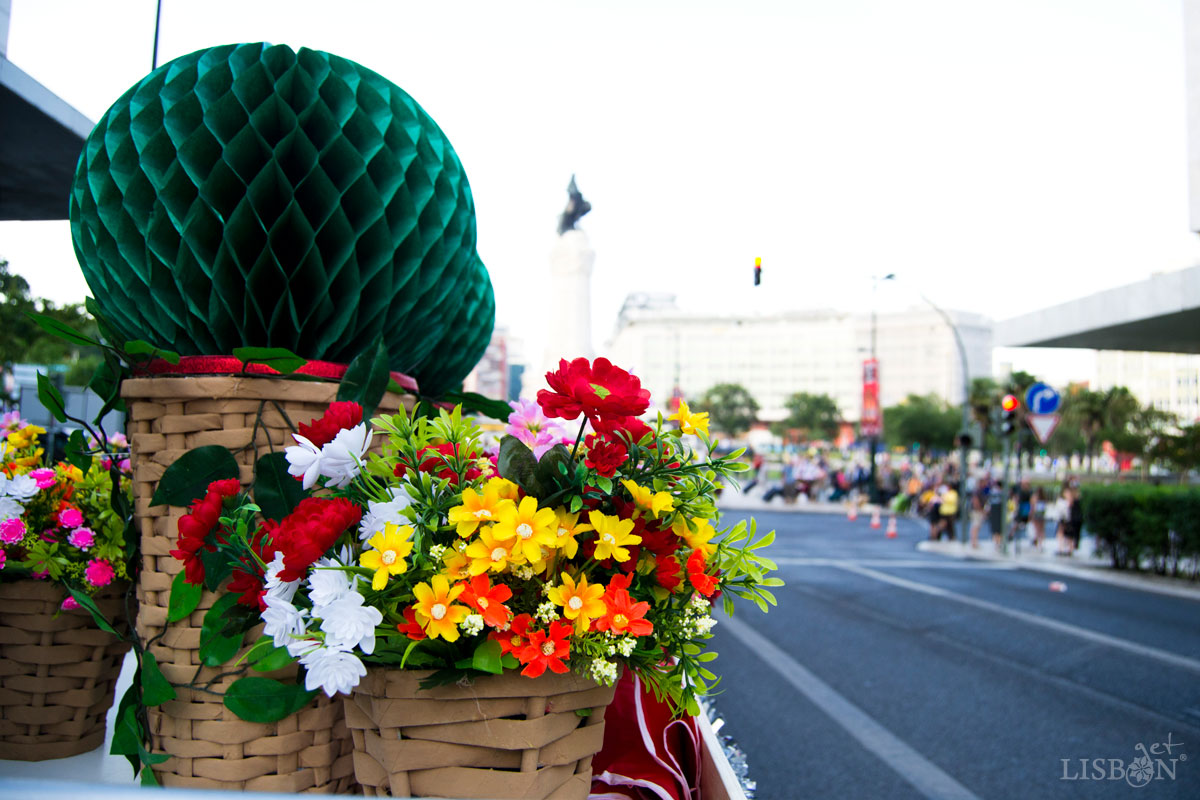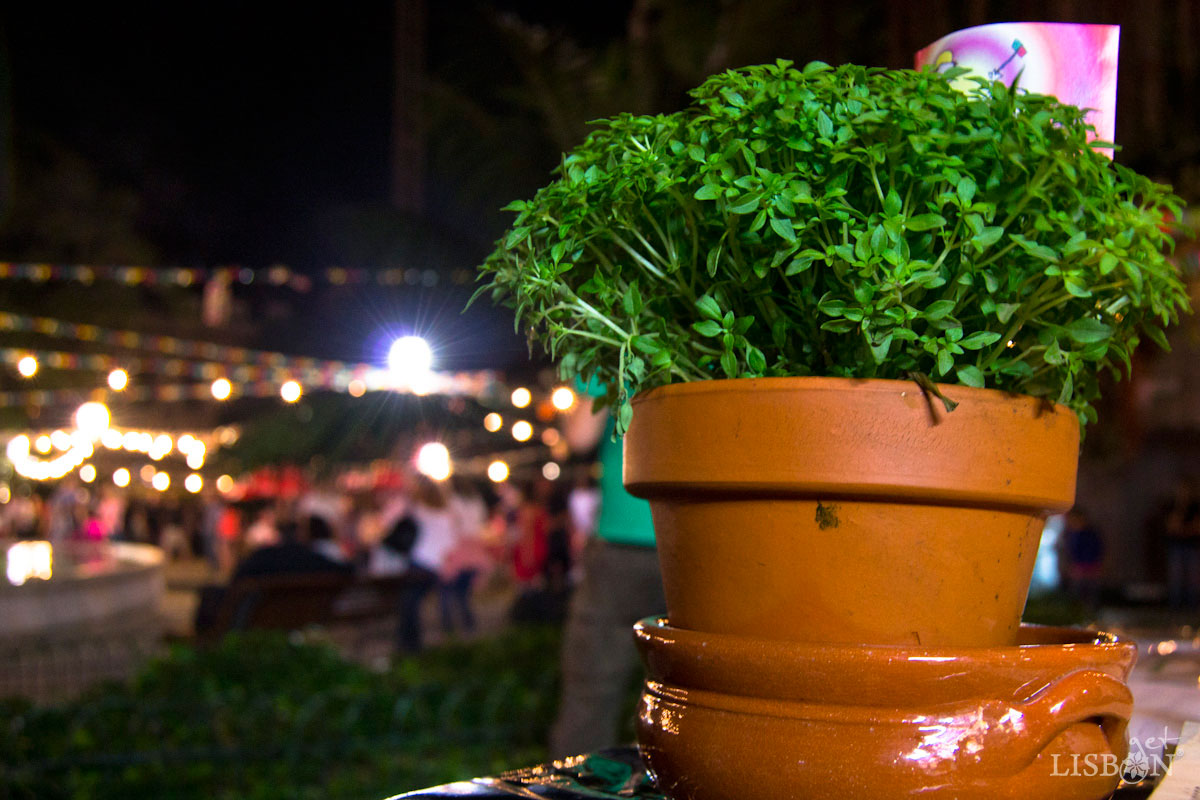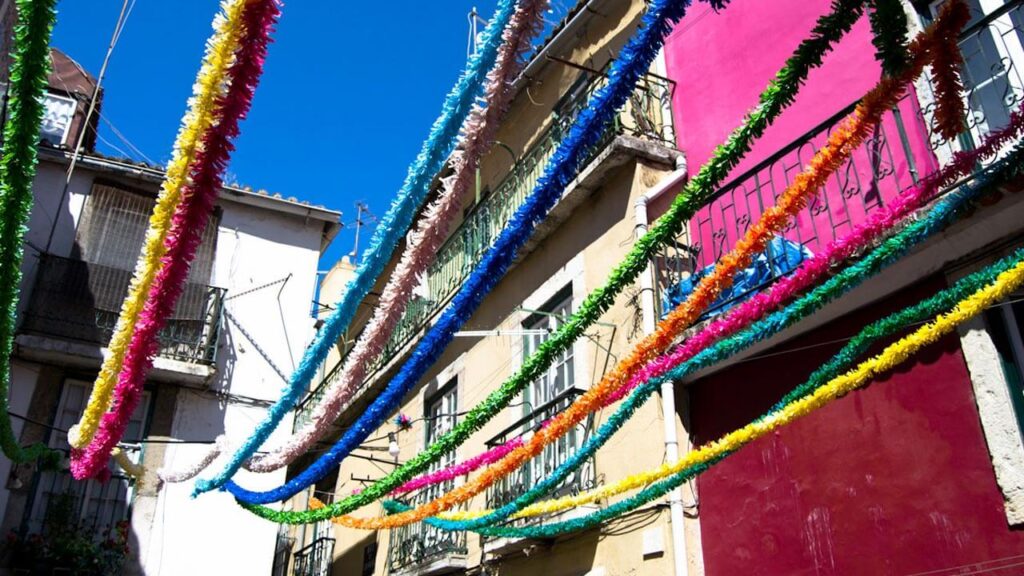Original article published on 6 Jun 2018
June has arrived, the festivities have just started. This is the most awaited month of the year! But what are the origins of the Festas de Lisboa?
Marked by the great involvement of the population and of those who visit us, the Festas de Lisboa (Lisbon Festivities) dedicated to the popular saints reunite several cultural initiatives, revelry and religiosity.
The popular festivities brighten the city with music, food and beverages and lots of liveliness. Lisbon smells of grilled sardines and febras (pork steaks), farturas (a deep-fried sweet roll sprinkled with sugar and cinnamon) and manjericos (a plant traditionaly used during the festivities) decorated with paper carnations and rhymes.
The highlight of these festivities are on the 12th and on the 13th, Saint Anthony’s day.
The first day is the bustle of the Weddings of Saint Anthony, the Marches and the Festivities that go on all night long.
The 13th had to be a holiday in Lisbon!
It is then time for the religious demonstrations. The Procession of Saint Anthony, that crosses the narrow streets of Alfama, attract thousands of devotees and curious people. The scent is now of the heady rosewood of the incense burners that accompany the procession.

Let’s find out more about the origins of the Festas de Lisboa, the Weddings of Saint Anthony and the Parade of the Popular Marches.
Get to know Lisbon’s historic neighbourhoods in a guided tour and discover unmissable places of this magnificent city.
Weddings of Saint Anthony
In Lisbon, the morning of June 12 is marked by the Weddings of Saint Anthony, the matchmaker saint, patron of the heart of the people of Lisbon.
People rush to see the brides and grooms. The televisions focus their attention on this event in which hundreds of professionals from different fields take part. The media is divided between the religious ceremonies in the Lisbon Cathedral and the civil ceremonies that take place in the Lisbon City Hall.
In addition to the weddings, the vow renewals of the couples that were also once Brides and Grooms of Saint Anthony and that are now completing 50 years of marriage take place.
Afterwards, a lunch is served and at the end of the day the brides and grooms descend the Avenida da Liberdade, participating in the Parade of the Popular Marches.

But this tradition isn’t lost in time, its history is well documented and is relatively recent. The first edition of this event took place in 1958. The newspaper Diário Popular promoted the idea of Augusto Cortês Pinto (a specialist in studies about Lisbon) and with the sponsorship of the City Council of Lisbon it was put into practice.
This collective wedding gave the possibility to couples from Lisbon with fewer financial resources to have a party and gather material goods for a more comfortable start of this stage in life.
At the time, just like today, several brands of the most varied products apply to sponsor the couples.
The event was discontinued after the revolution of 1974, having been recovered 30 years later and has been gaining popularity.
The supervision and effort of the City Council of Lisbon in partnership with other entities guarantee the quality of the event that is now considered an indispensable tradition in the Festas de Lisboa.


The Parade of Popular Marches

We dare to say that the organisation of the marches of Saint Anthony is the event that most gathers the communities of the traditional neighbourhoods of Lisbon. The participants, of all ages, divided in groups, work hard for months to carry out this exhibition that for many people constitutes the most awaited night of the year.
For this event are created songs, poems, scenography, costumes and choreographies that are rehearsed to the point of exhaustion so that it comes out perfect on the day of the parade that gives colour to the Avenida da Liberdade.

Each group presents two godfathers, generally famous public figures, and the mascots, two young children.
The Parade of Popular Marches is always broadcasted live on television and it’s there where you can see best the choreographies and pay attention to the details in general.
But to actually feel the Festas de Lisboa you need to, on that night, descend the Avenida and see and hear this event live.
Afterwards it’s time for festivities and to ruin the diet with sardines, pork steaks and grilled chorizo, snails, farturas and… lots of beer.
Between official and improvised festivities, the choice is yours.

The Origins of the Festas de Lisboa – from Secular Traditions to the Present
Since ancient times, June was a month of festivities and pagan cults related to the solstice and the harvest-time.
The affirmation of Christianity was made by associating its own cults to the traditionally instituted ones.
The origins of the Festas de Lisboa are thus the intersection of these two elements, pagan festivals and Christianity.
The festivities dedicated to Saint Anthony had two dates, February 15 and June 13. Seeing that the day when the saint’s body was taken to Padua Cathedral ended up being associated to liturgy, the day of his death in June was more convenient to the festivity and popularity.
The religious character of the Trezena (same as novena, but instead of 9 days, it lasts for 13), the Pontifical Mass in the Cathedral and the Procession of Saint Anthony, joined the festivities of the time.
There were bullfights in Terreiro do Paço and in Rossio, ritual offerings of manjericos and flowers, fires and festivities the people would go to in groups, singing and carrying lighted balloons that have its origin in the parade of the marches. The children built thrones and raised money for candles, all dedicated to Saint Anthony.
The dreadful earthquake of 1755 destroyed the Church of Saint Anthony, a Manueline construction built over the place where the Saint was born in 1191. Its reconstruction was entirely financed by the population with the alms raised for years, by the kids from the neighbourhoods that kept making the thrones with this purpose.

In the 20th century, with the Estado Novo (nationalist corporatist authoritarian regime installed in Portugal from 1933 to 1974), the spontaneous nature of the festivities was regulated. The modernist vision of the totalitarian regime aimed to “clean” the neighbourhoods and build a new city, freshening the festivities up. The popular improvisation gave way to cinematic folklore. The contest of the Parade of Marches was organised and later the Brides of Saint Anthony, all duly regulated.
| Never miss another article | Subscribe here |
The Festas de Lisboa Today
After the revolution of 25th of April, the traditions and popular festivities were inevitably associated to the regime and naturally abolished.
It took many years for the Marches to return.
Today, the festivities are celebrated by the people with great enthusiasm.
But the autarchy has a decisive role here, by promoting the involvement of the populations of the neighbourhoods and knowledge about the origins of the Festas de Lisboa. The Museum of Lisbon – Saint Anthony has had an important role in the study and divulgence of the history of the traditions.
The Sardine Contest, already in its 8th edition, attracts thousands of national and foreign participants. The aim is the creation of the image of the sardines that will be used in the campaign of the Festas de Lisboa.
The thrones were freshened up through the initiative of EGEAC and of the Museum of Lisbon – Saint Anthony of organising a contest since 2016. The Museum provides bases for the thrones for free and the rest of the decoration is up to the creativity of the hundreds of participants.
In addition to the contests, on the streets of the most traditional neighbourhoods, we continue to find windows and balconies decorated with thrones, sardines, flowers, garlands and colourful paper balloons.

But the Festas de Lisboa of today aren’t just tradition and contests. The City Council of Lisbon and EGEAC promote free cultural activities, exhibitions, cinema, and music concerts for every taste and always with great animation.
It’s hard to pick!
Enjoy the Festas de Lisboa! 🙂
The project getLISBON has been very rewarding and we want to continue revealing the singularities of fascinating Lisbon.
Help us keep this project alive!
By using these links to make your reservations you’ll be supporting us. With no extra costs!
• Looking for a different experience? We can create a customised itinerary based on your interests. Contact us!
• Or if you prefer tours and other activities in various destinations, take a look at GetYourGuide.
• Save time and money with a flexible Lisbon Card!




